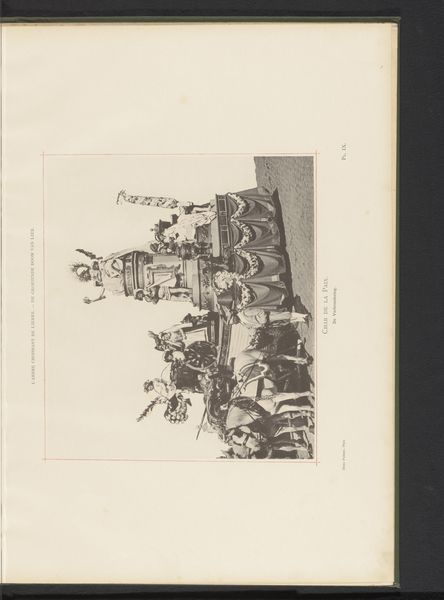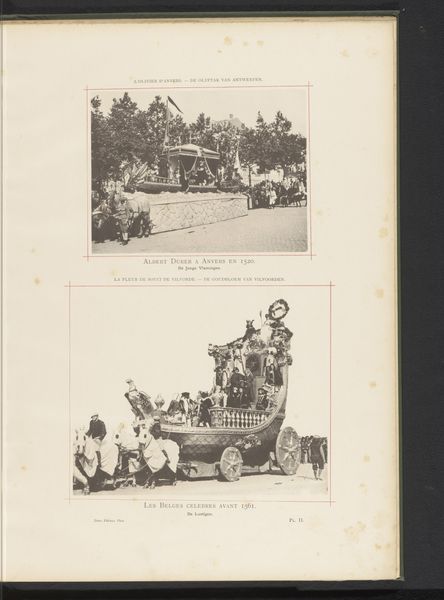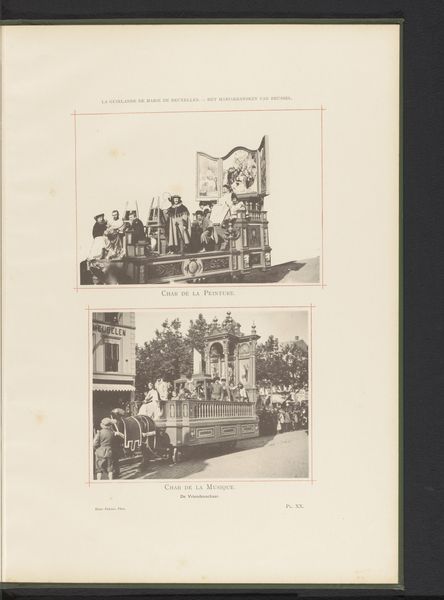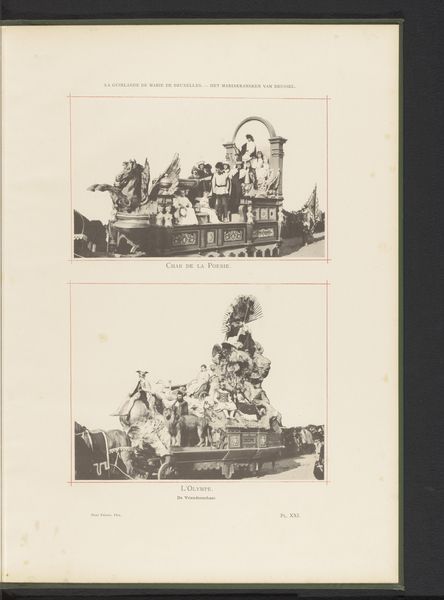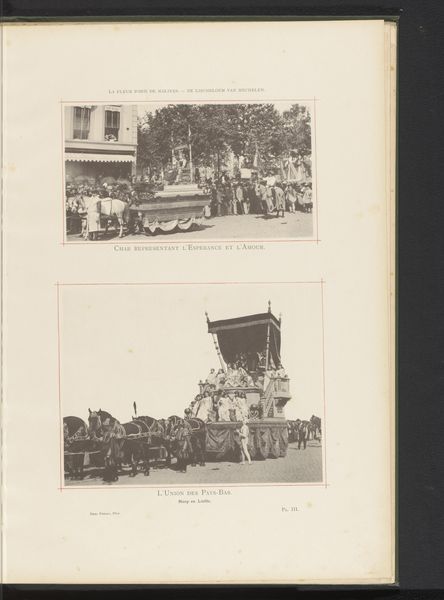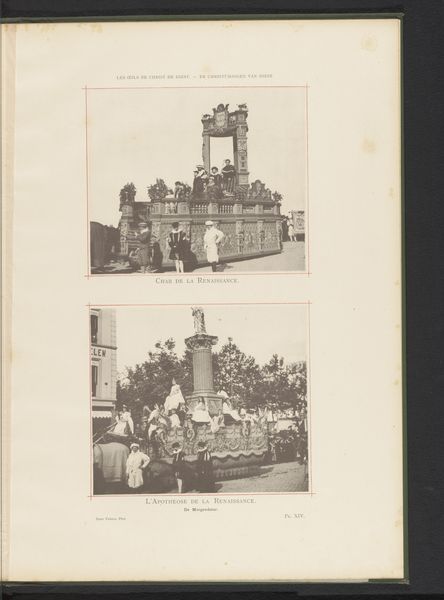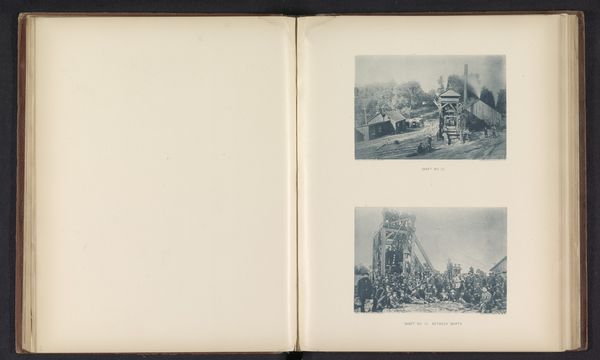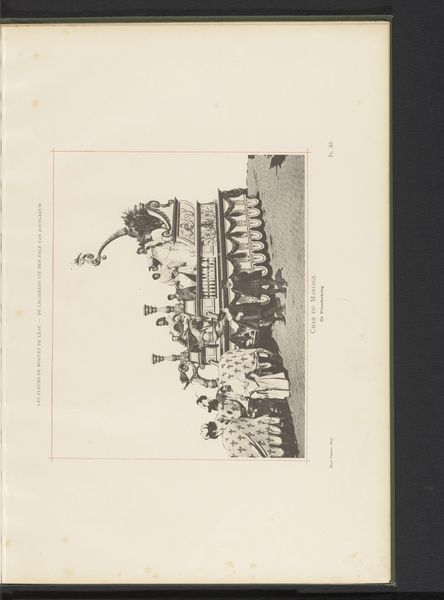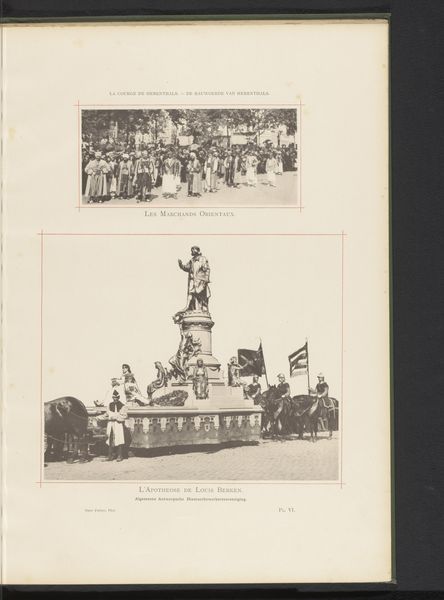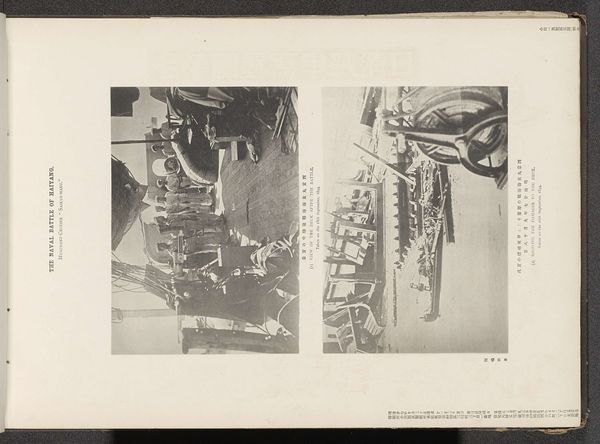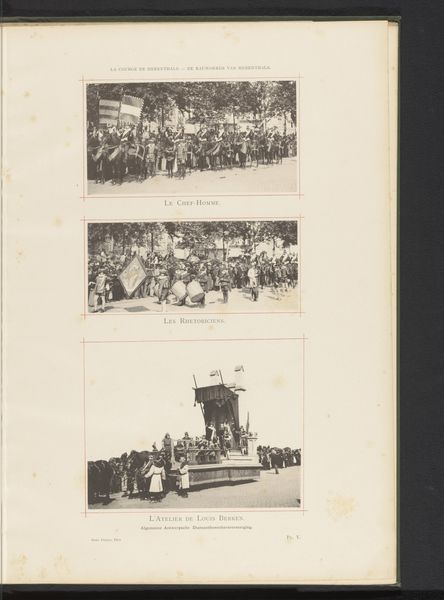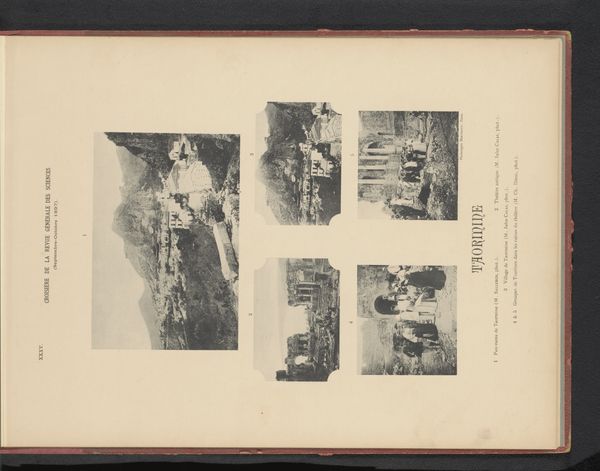
Twee gezichten op de optocht van Landjuweel ter ere van het vijftigjarig bestaan van de Academie d'Archéologie de Belgique in 1892 in Antwerpen 1892
0:00
0:00
print, photography, albumen-print
# print
#
photography
#
history-painting
#
albumen-print
Dimensions: height 495 mm, width 352 mm
Copyright: Rijks Museum: Open Domain
Curator: Looking at this albumen print, created by Frères Dero in 1892, we see "Twee gezichten op de optocht van Landjuweel ter ere van het vijftigjarig bestaan van de Academie d'Archéologie de Belgique in 1892 in Antwerpen" – or, "Two views of the Landjuweel parade in honor of the fiftieth anniversary of the Belgian Academy of Archeology in Antwerp." Editor: What strikes me first is how staged and almost dreamlike these parade floats appear in monochrome. The scale feels grand but also delicate given the print medium. Curator: Consider the labor involved: the photographic process itself, albumen printing being quite meticulous. Then there's the skilled craftsmanship in building these elaborate floats – "Char de l'Histoire," for instance – referencing historical tableaux, costumes, and sculptural elements. Editor: Indeed, and the political theatre. This celebration highlights Belgian identity and pride in its historical institutions at a time when national narratives were being actively constructed and contested. The procession aestheticizes a romanticized past, carefully curated for public consumption. I am certain this "constructed" narrative would serve to marginalize the lower-class peoples. Curator: Precisely. Who were the performers and how much were they paid? And what of the public participating – how did this spectacle shape notions of national unity across diverse classes? We need to think about material resources expended for what is, ultimately, ephemeral display, and the economic benefits to those commissioned to build these impressive objects. Editor: Furthermore, beyond economic aspects, we could consider the ideological labor embedded within such nationalistic events. What specific narratives about Belgian history and culture were reinforced, and at whose expense? Who was not reflected within the romanticism on display in the parade? Curator: Absolutely. Thinking of the material object itself as a form of cultural and political artifact gets to the heart of its significance, extending our understanding far beyond the mere "recording" of an event. It speaks of the industry of image-making at the turn of the century, where the act of photographic reproduction contributed to both memory-making and narrative control. Editor: I find this albumen print a really valuable visual document from a formative era— it can tell us so much about the entwined dynamics of material culture, class identity, and power in 19th century Belgium.
Comments
No comments
Be the first to comment and join the conversation on the ultimate creative platform.
